Bird of Paradise Plant Care
This post may contain affiliate links, please see our policy for details.
Tips and info for bird of paradise plant care including how and when to water, what to do about pests, how to prune and how to repot.
Birds of paradise are a beautiful species of evergreen plants native to South Africa.
They are arguably one of the most popular indoor plants with large, glossy, banana-shaped leaves that fan out and light up a room.
I’ve always loved these plants and now I’m lucky enough to add this beauty to our fiddle leaf fig and the rest of our growing plant family.
I found my bird of paradise, Ethel, more than 2 years ago in my local home improvement store for $15.
She had broken leaves and was shoved in a corner, left for the trash. I scooped her up and brought her home to live in our light-filled sunroom.
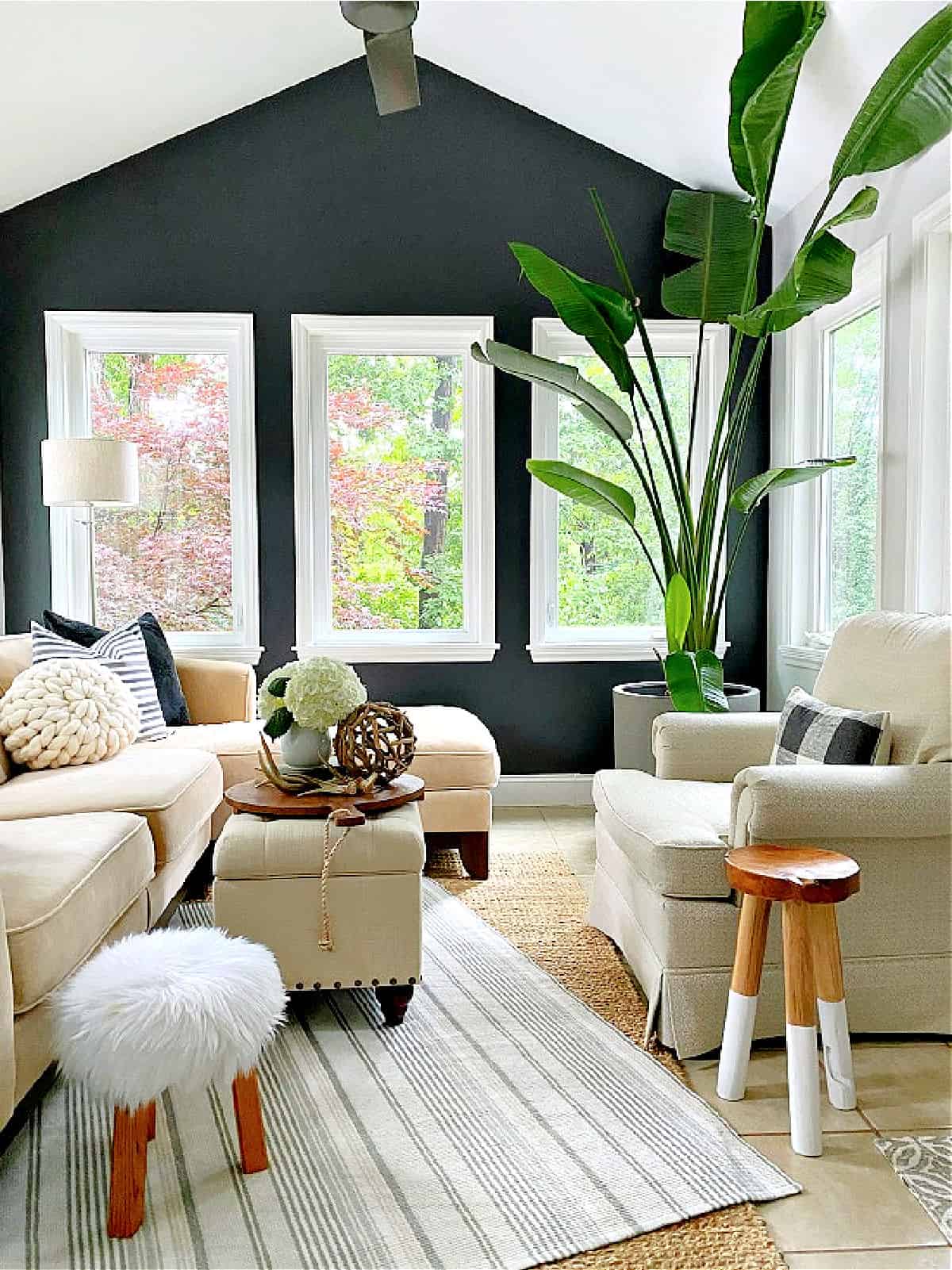
Bird of Paradise Origins
Birds of paradise are hardy, long-lasting plants that will adapt to most indoor environments.
Originating in South Africa, the bird of paradise gets its name from the way its flowers bloom.
Its flowers are made of three bright cantaloupe-orange petals, and three royal blue petals that are fused into one bud.
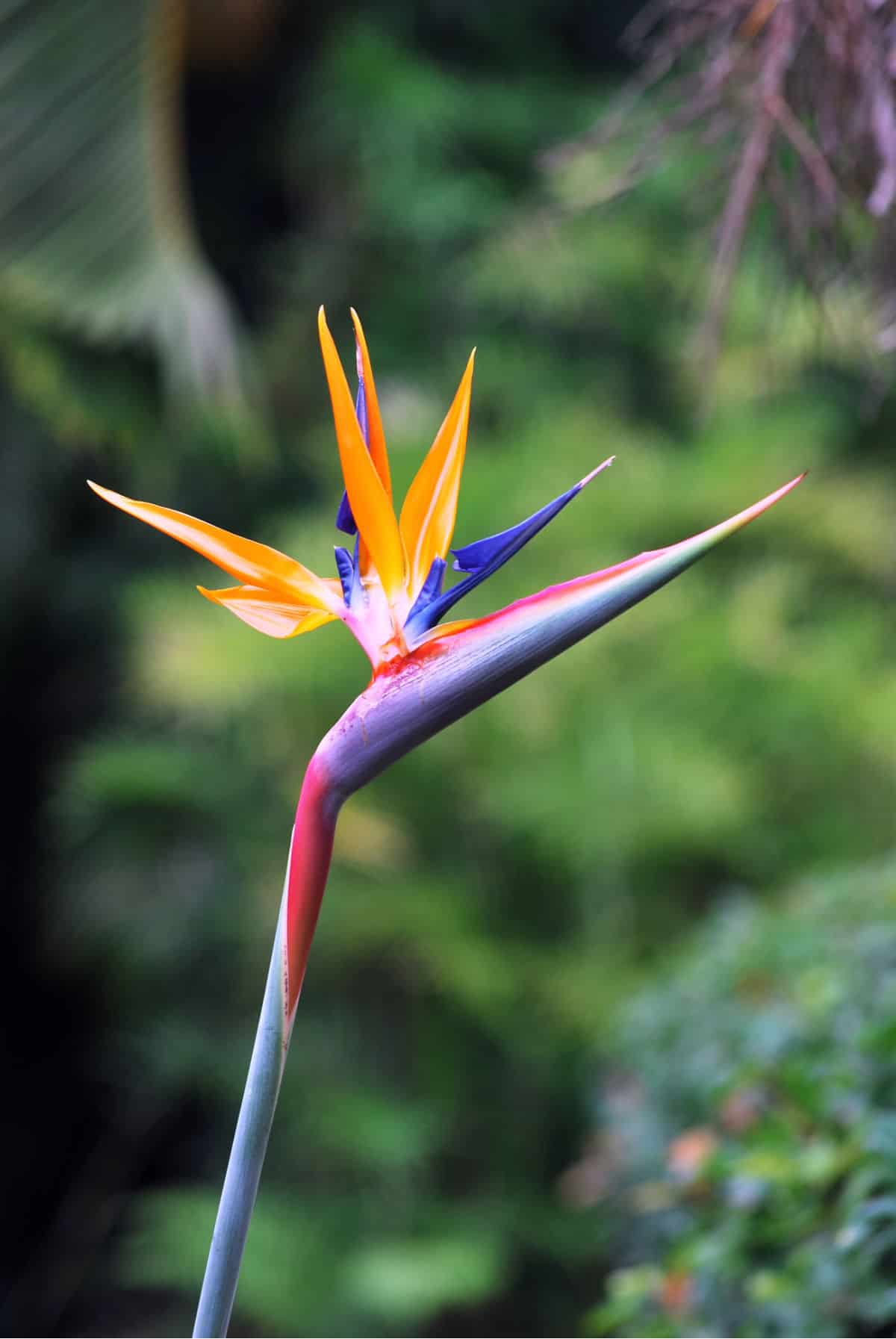
When the flower blooms each of the petals fan out, and the result looks a lot like a bird in flight.
There is also a type of bird of paradise, Strelitzia nicolai, that blooms white bird flowers.
Bird of Paradise Meaning
This plant is so beloved in South Africa that it’s been grown at their Royal Botanic Gardens since the eighteenth century.
Strelitzia reginae and Strelitzia nicolai, its scientific names, were given by Sir Joseph Banks, one of the directors of the royal gardens.
Strelitzia comes from Queen Charlotte, Duchess of Mecklenburg-Strelitz.
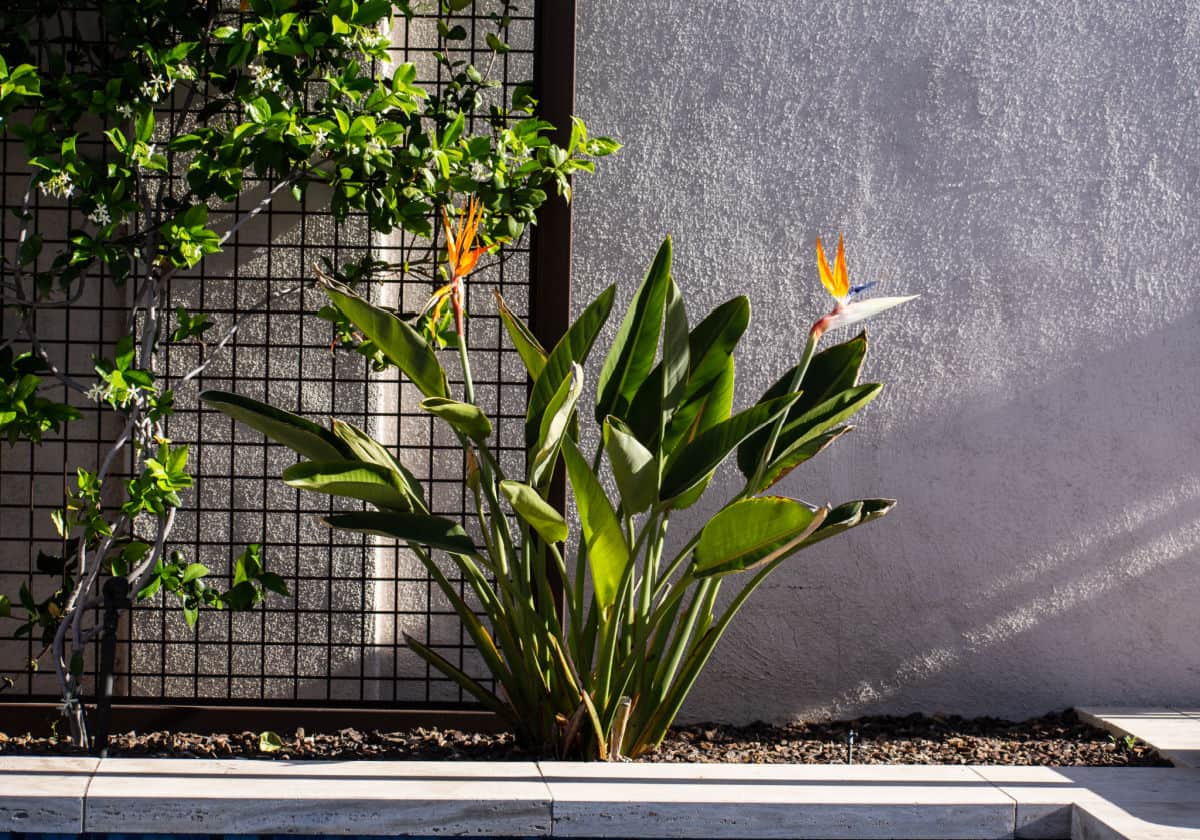
Depending on where in the world you are, birds of paradise take on different meanings and representations. In South Africa, it’s native country, they represent joy and paradise, hence the name.
In Hawaii, where Georgia O’Keeffe famously painted White Bird of Paradise, they stand for magnificence and a positive outlook on life.
Bird of Paradise Plant Growth
Bird of paradise plants are easily recognizable by their large, glossy, green leaves and vivid, fanned out flowers.
This is what drew me to them when I was looking for a plant for our sunroom.
They can be grown inside and in a wide variety of environments, however, the biggest challenge owners face when growing indoors is their size.
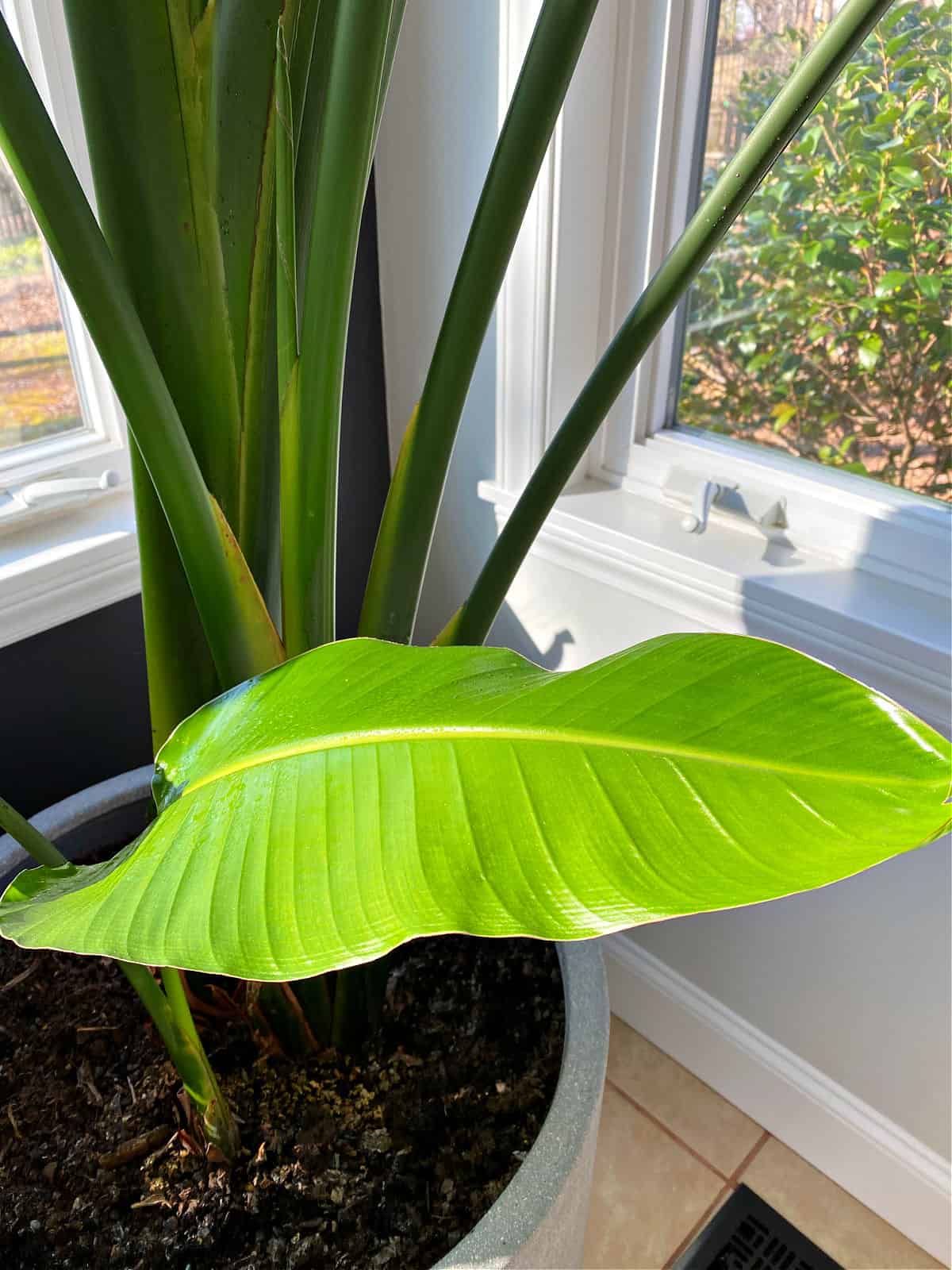
Birds of paradise can grow well over 6 feet tall and up to 6 feet wide!
They are relatively easy to care for, but the most important thing that they do need is sun exposure.
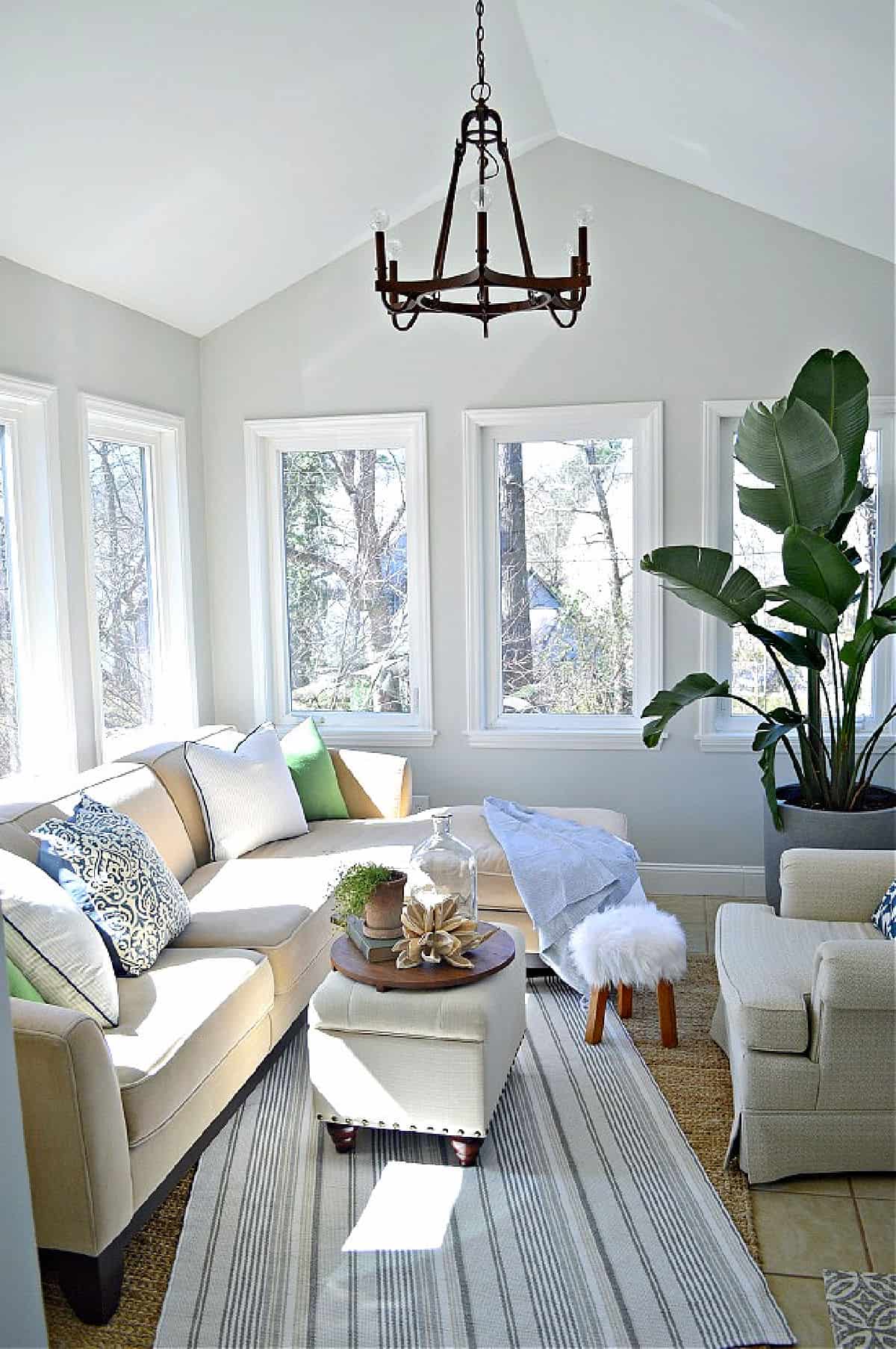
The optimal growth for a bird of paradise is in a pot indoors, being moved outside for the summer months and then inside for the dormant season.
As my Ethel is already touching the ceiling, and the pot is very heavy, we aren’t able to take her outside for a bit of summer sun.
She doesn’t seem that upset about it though, as you can tell by her growing size.
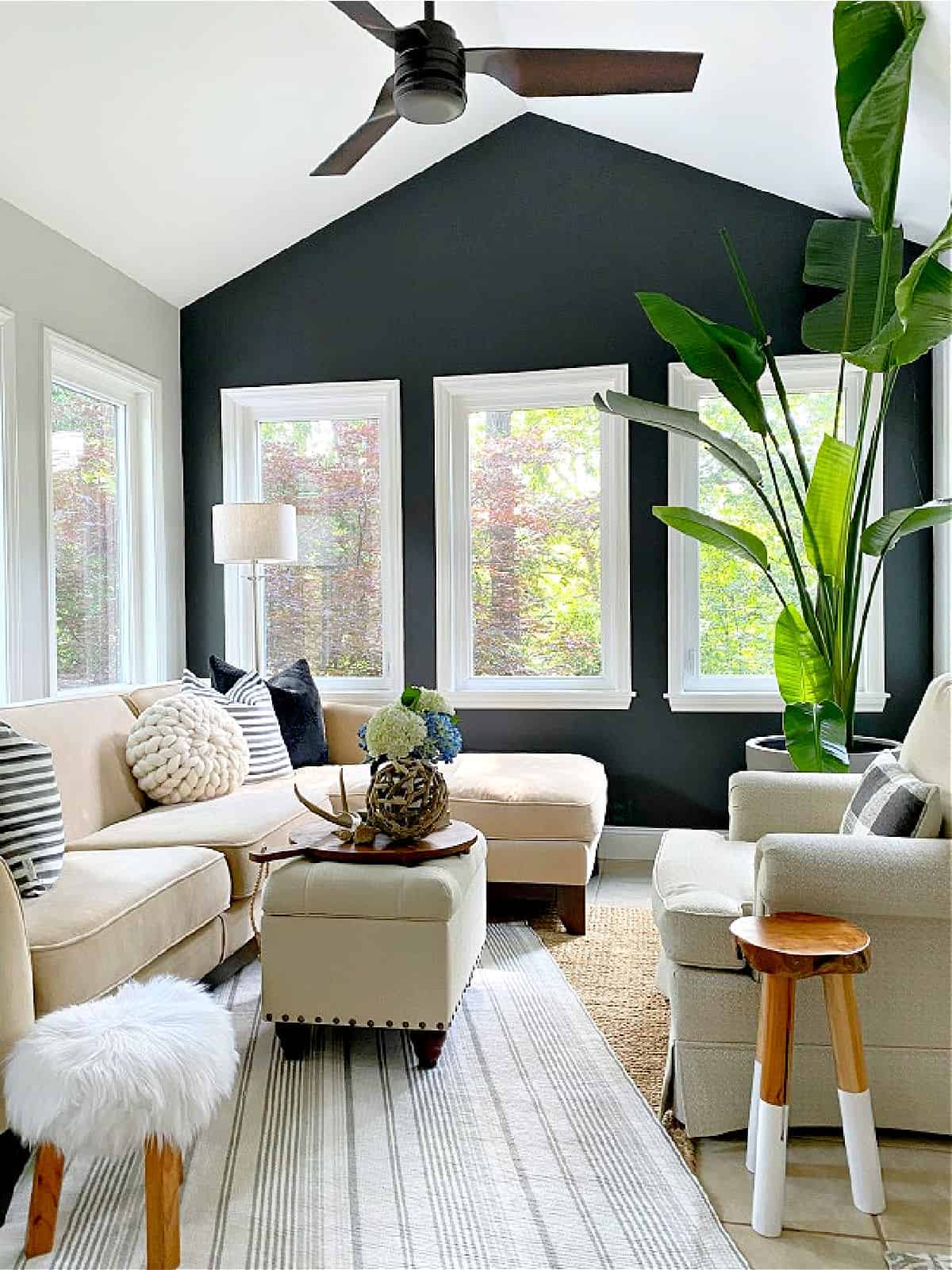
The beautiful bird-like flowers they produce will only bloom after the plant has matured to about five years old. This is when watering and sunlight is especially critical for the flowers to bloom.
The bird of paradise will reward your patience and diligence with beautiful, vibrant flowers.
We haven’t reached that point yet but we’re hopeful that Ethel will bloom in her own time.
One word of caution about growing a bird of paradise is that it can be toxic if consumed in large amounts by people or pets.
Make sure you watch your children and pets carefully around them.
Indoor Bird of Paradise Plant Care
Bird of Paradise light requirements
How much light does a bird of paradise need?
A bird of paradise plant should be getting at least six hours of sun per day.
When caring for your plant, always remember where they come from.
South Africa is known for averaging 8-10 hours of sunshine per day, therefore, birds of paradise require very bright light, and lots of it.
Mature plants can easily handle long hours of sunshine, and should be positioned by a southern or western-facing window to maximize their sunlight.
My Ethel sits next to windows on three sides of the sunroom, facing south, east and west, so she has plenty of light.
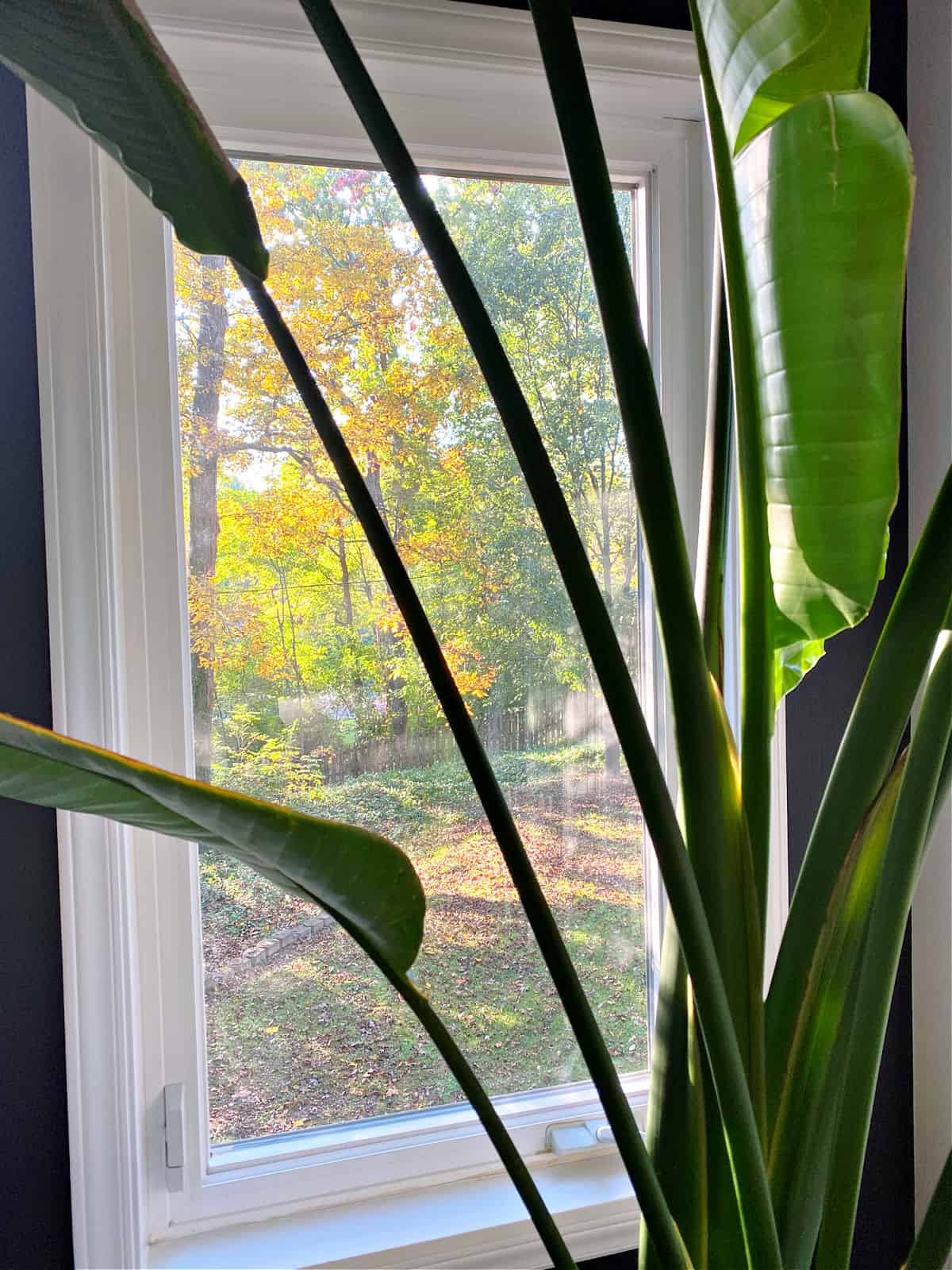
Younger plants, however, can’t handle direct sunlight as well and could possibly scorch their leaves, so gradually work up your younger birds of paradise.
Not enough sunlight is the main reason why bird of paradise flowers don’t bloom.
If your home is not suited for that much sunlight, moving the plant outside during the summer can help, so long as you increase its exposure gradually.
You can also add artificial light to help with growth.
How often should you water a bird of paradise?
A good rule of thumb is to water once a week, but water thoroughly if the topsoil is completely dry.
The soil should be kept moist, but not soggy, particularly during their growing season in spring and summer.
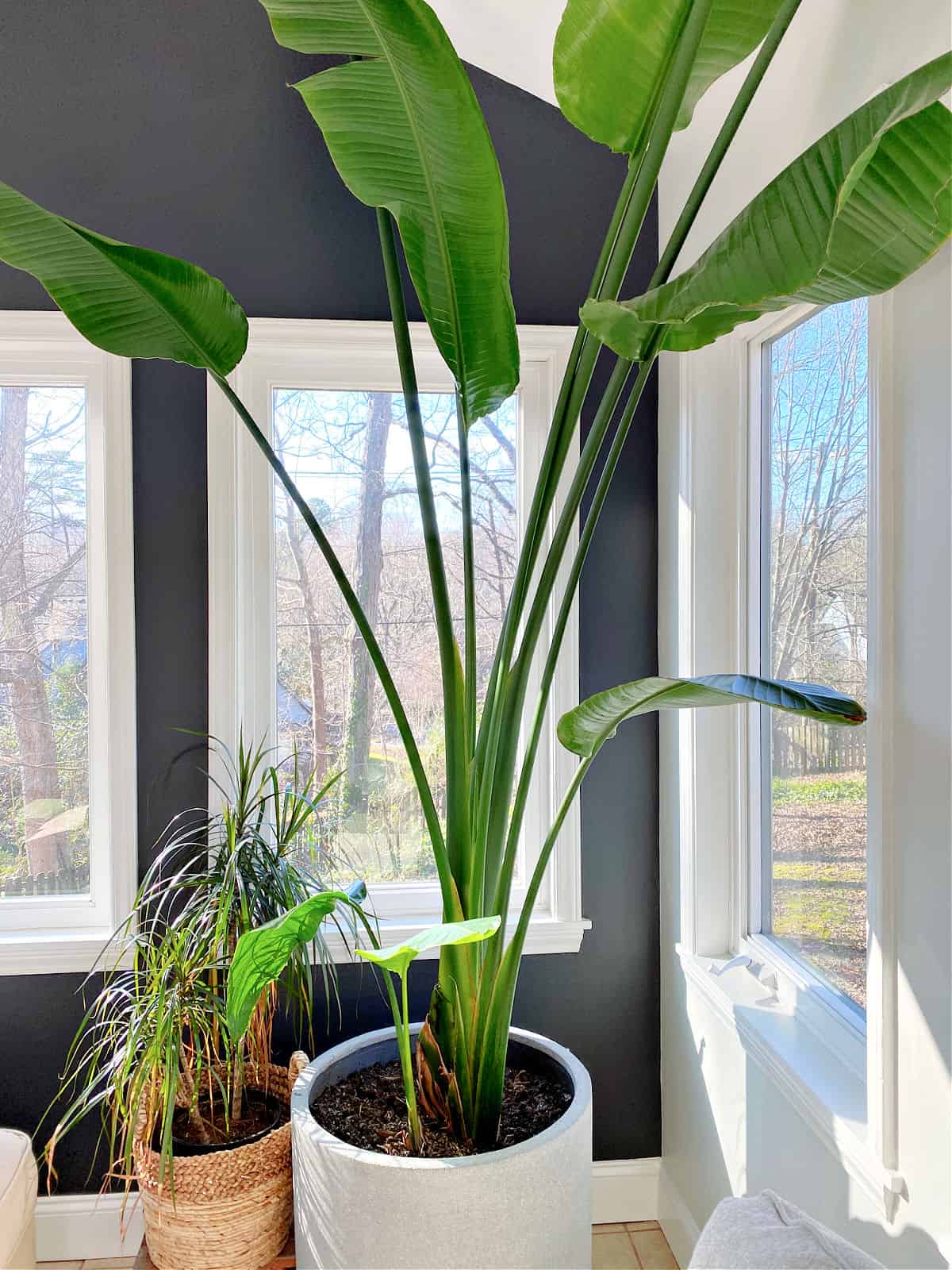
Overwatering can kill a bird of paradise because its roots cannot handle sitting in water, so be sure to let the soil dry out before deeply watering again.
Although this plant is evergreen, they still go dormant during the fall and winter months, and require very little water.
You should only have to water about once a month during their dormancy, allowing the top 2 inches of topsoil to dry out completely.
Avoid using water with high salt concentration, as this could burn the leaves.
One device that I’ve found useful, so that I don’t overwater Ethel, is a soil moisture meter.
They’re fairly inexpensive and it’s a great way to check the moisture in the soil.
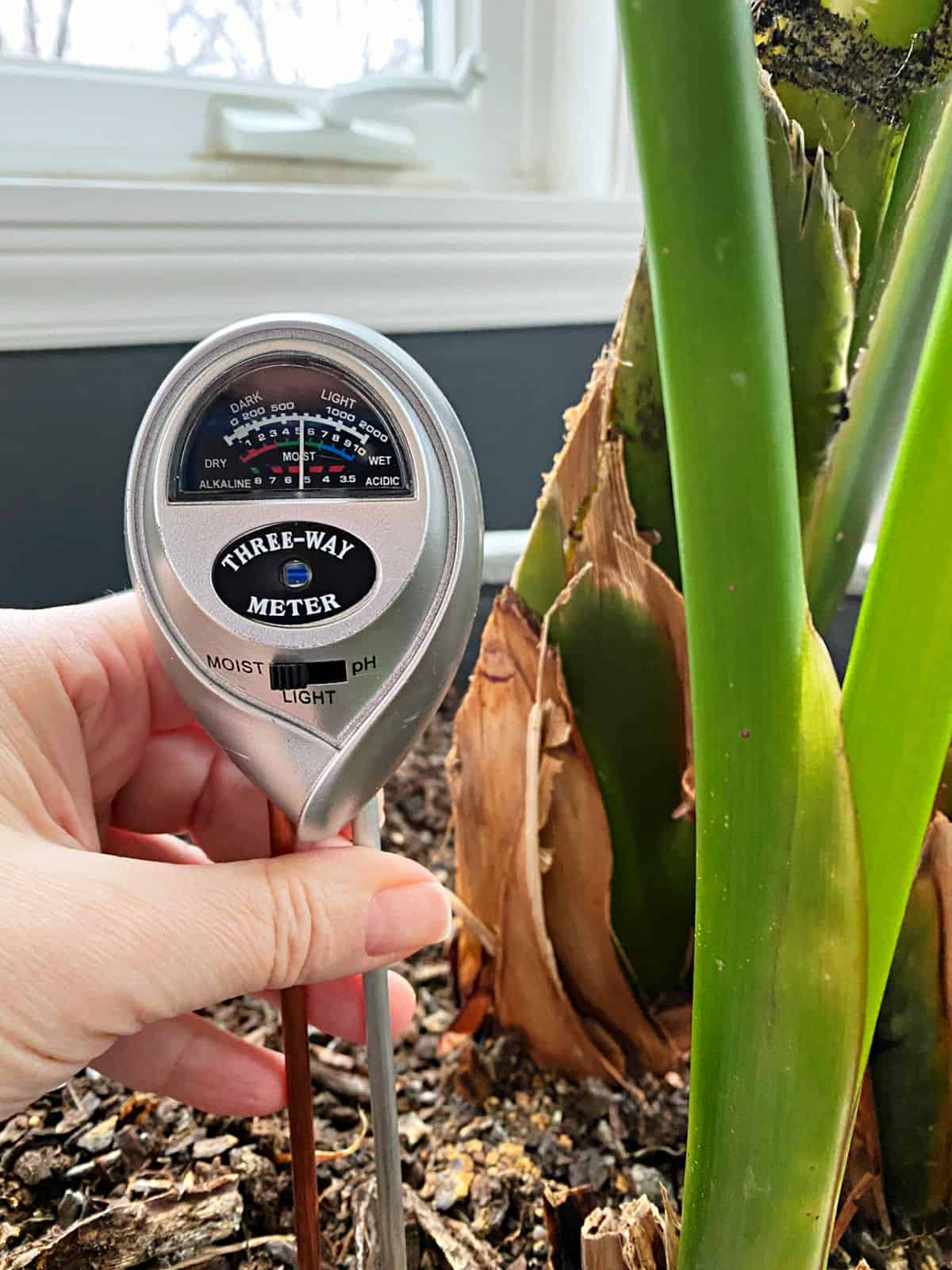
To maintain humidity, mist the plant with water during the growing season.
If the inside of your home is particularly dry, you can add a plate with pebbles and water underneath to increase humidity.
Soil
Birds of paradise aren’t very picky about their soil, as you can tell by all the different places it can grow.
Using a basic, rich potting soil that retains water is good enough, however, drainage should be a top priority.
As stated before, their roots can’t handle sitting in soggy soil, so be sure the soil you pick is loamy, aerates, and drains well.
As for fertilizer, birds of paradise require lots of feeding during their growing season in the springtime. I use pellets but liquid fertilizer is perfectly fine.
Pests
Common pests in birds of paradise are aphids, scale, spider mites, and mealy bugs.
Since the plant’s leaves are so large, though, it’s really easy to tell if a pest has taken hold of it.
If you find your plant has pests, simply wipe off the leaves with a soft cloth and warm, soapy water, making sure to clean both the top and underside of the leaves.
Spray pesticides should not be used on the leaves as they can damage their finish.
My solution for pests on Ethel has been to spray warm soapy water on her leaves and stems.
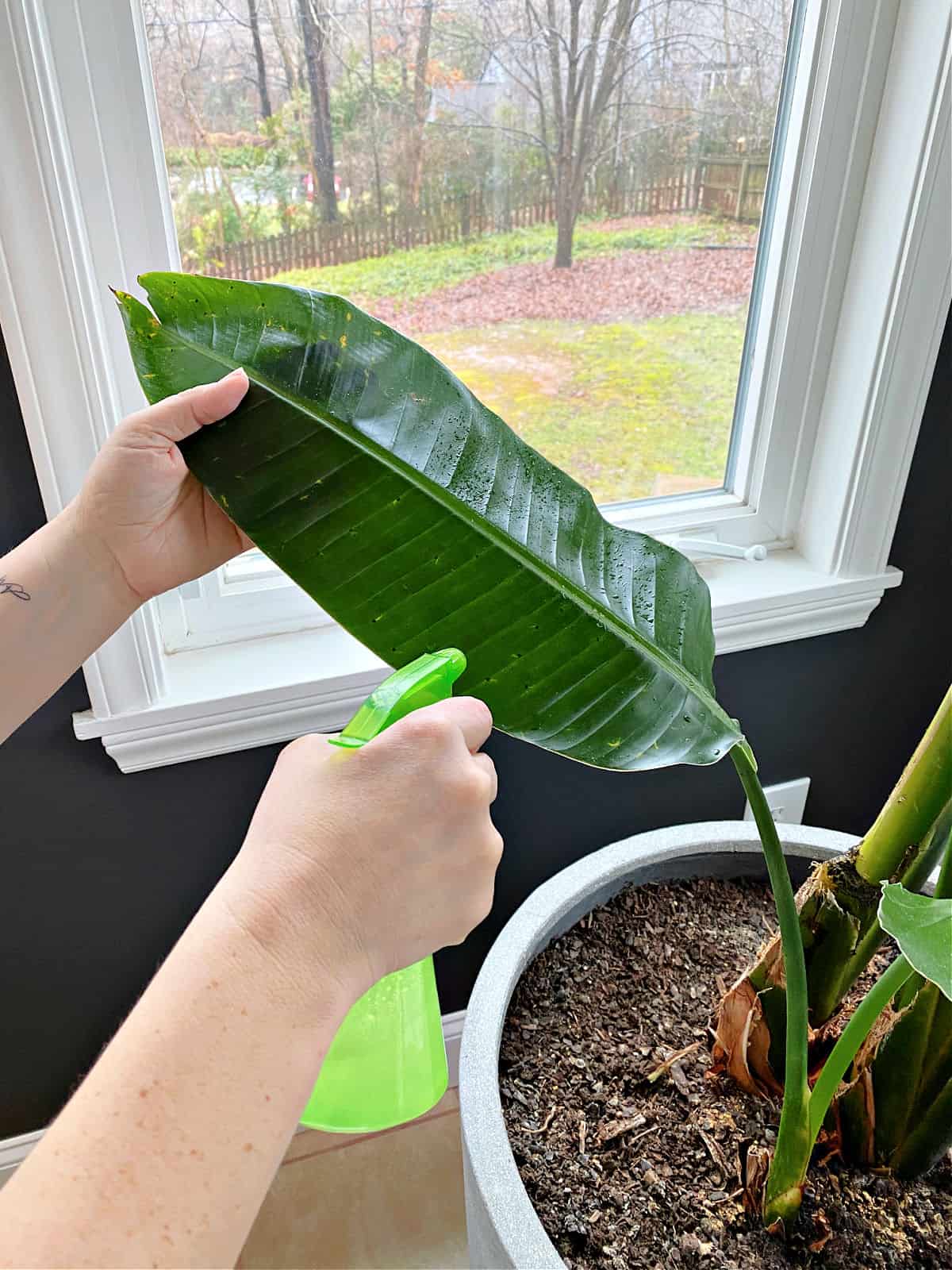
I mix 1 teaspoon of mild soap, usually Dr. Bronner’s, with about 4 cups of warm water.
Then I pour the solution in a squirt bottle and liberally spray down the leaves and stems.
How to Prune a Bird of Paradise
If you have a bird of paradise you will have to prune or trim it from time to time.
You may have a diseased or dying leaf that needs to be removed or you may just want to thin out your plant a bit.
It was scary for me to prune Ethel for the first time but it was necessary and she looked so much healthier after.
So, how to you prune a bird of paradise?
You want to use a very sharp, clean kitchen knife or sharp pair of scissors.
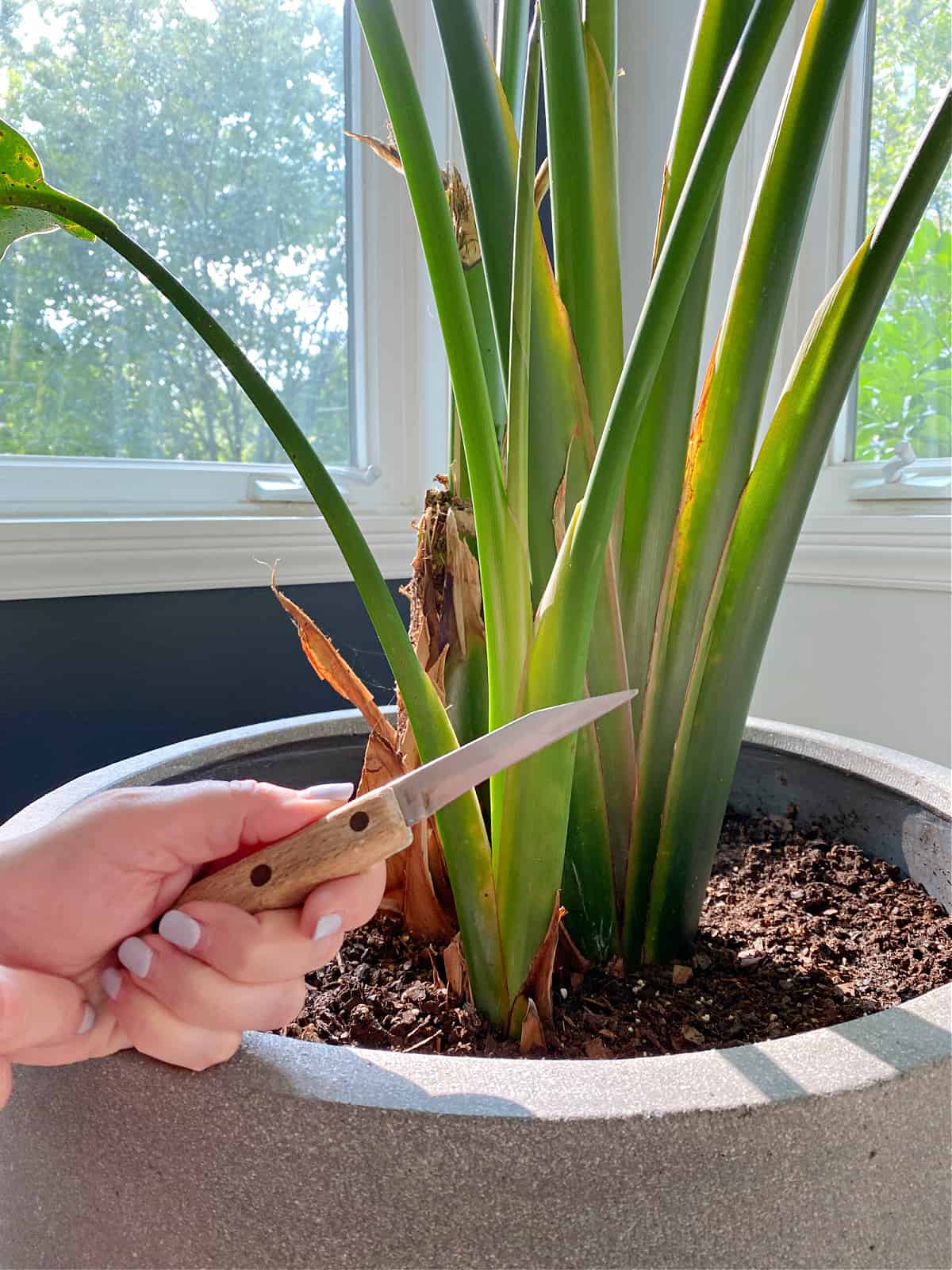
To cut take the sharp, clean knife and put it between the stem you are cutting and the stem that will remain.
Carefully cut the stem to be removed, without cutting into the stem of the remaining plant.
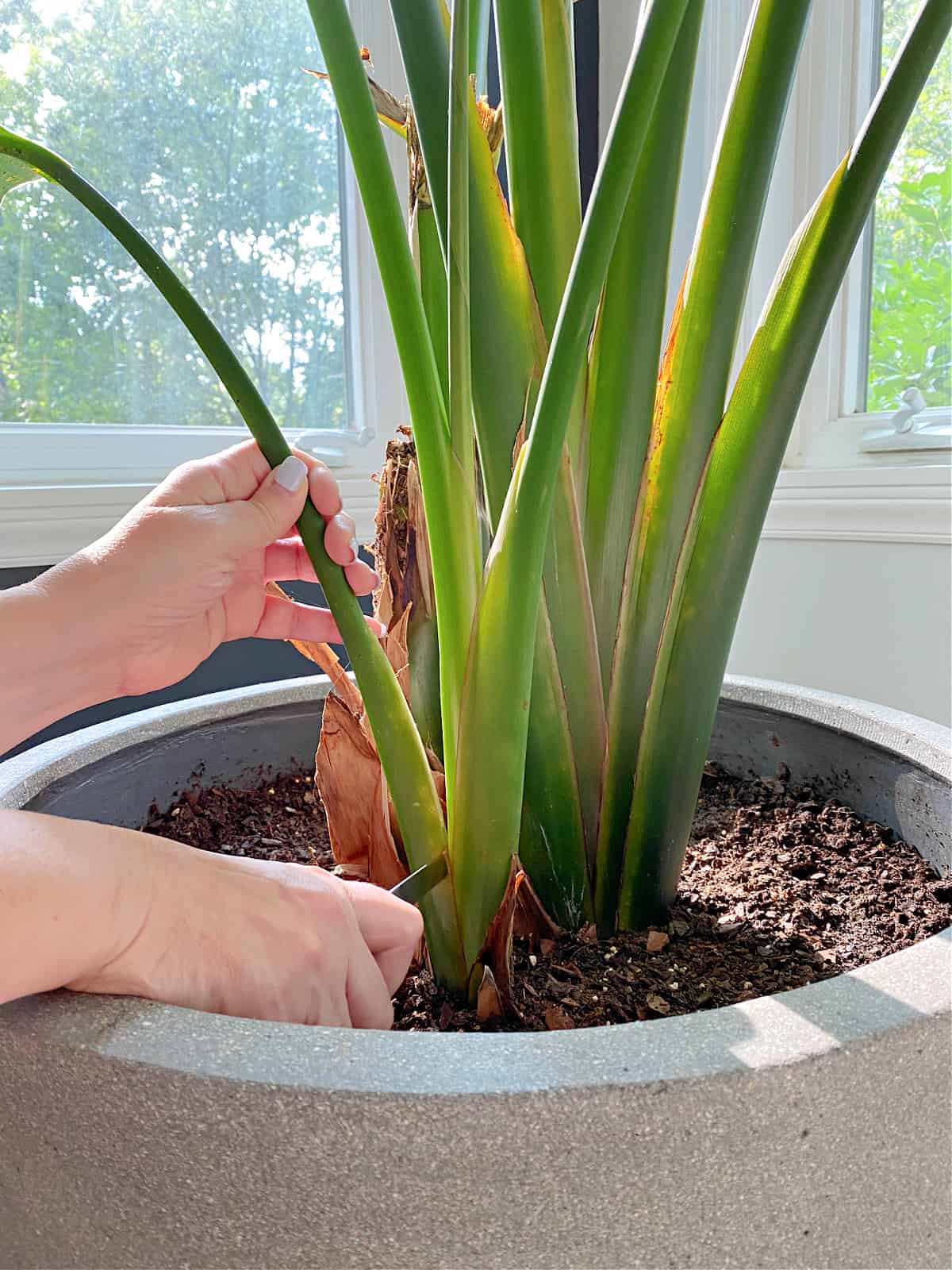
You may need to cut down into the dirt to get the whole stem. When the stem is free, discard it.
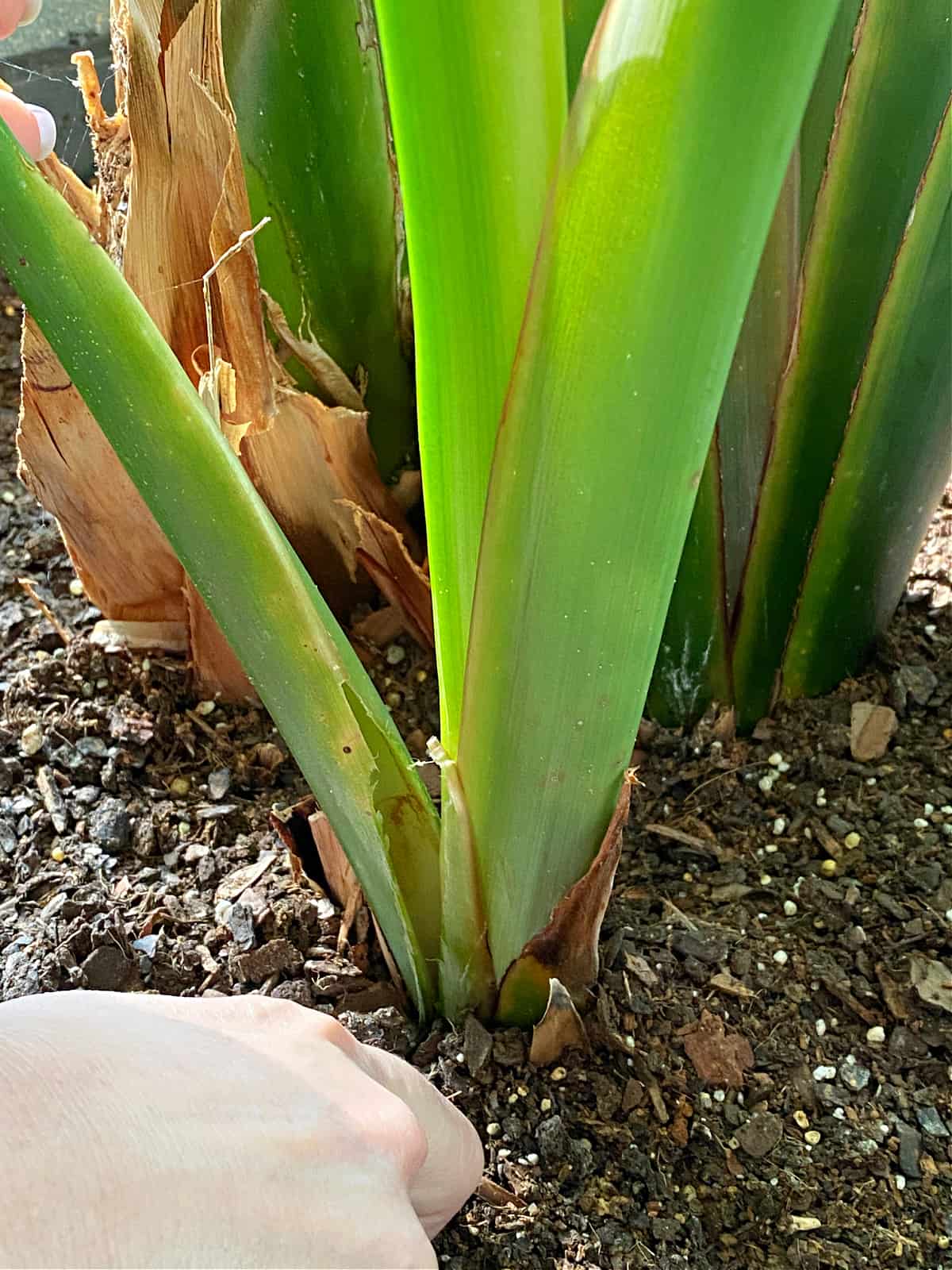
If you have pieces from the cut stem left on the plant you can use clean, sharp scissors to trim it away.
Next, spread a bit of dirt on the cut wound.
I’m not sure where I heard it but I’ve always rubbed a bit of the potting soil over the remaining stem on the plant after I’ve cleaned it up.
It’s supposed to help it heal and prevent any disease from creeping into the open wound.
I’m not certain if it’s a scientific fact but it hasn’t hurt so I always do it after a big cut.
Once the stem is removed use the scissors to clean up any brown leaves around the stems.
Try not to cut any of the plant that you are trying to keep.
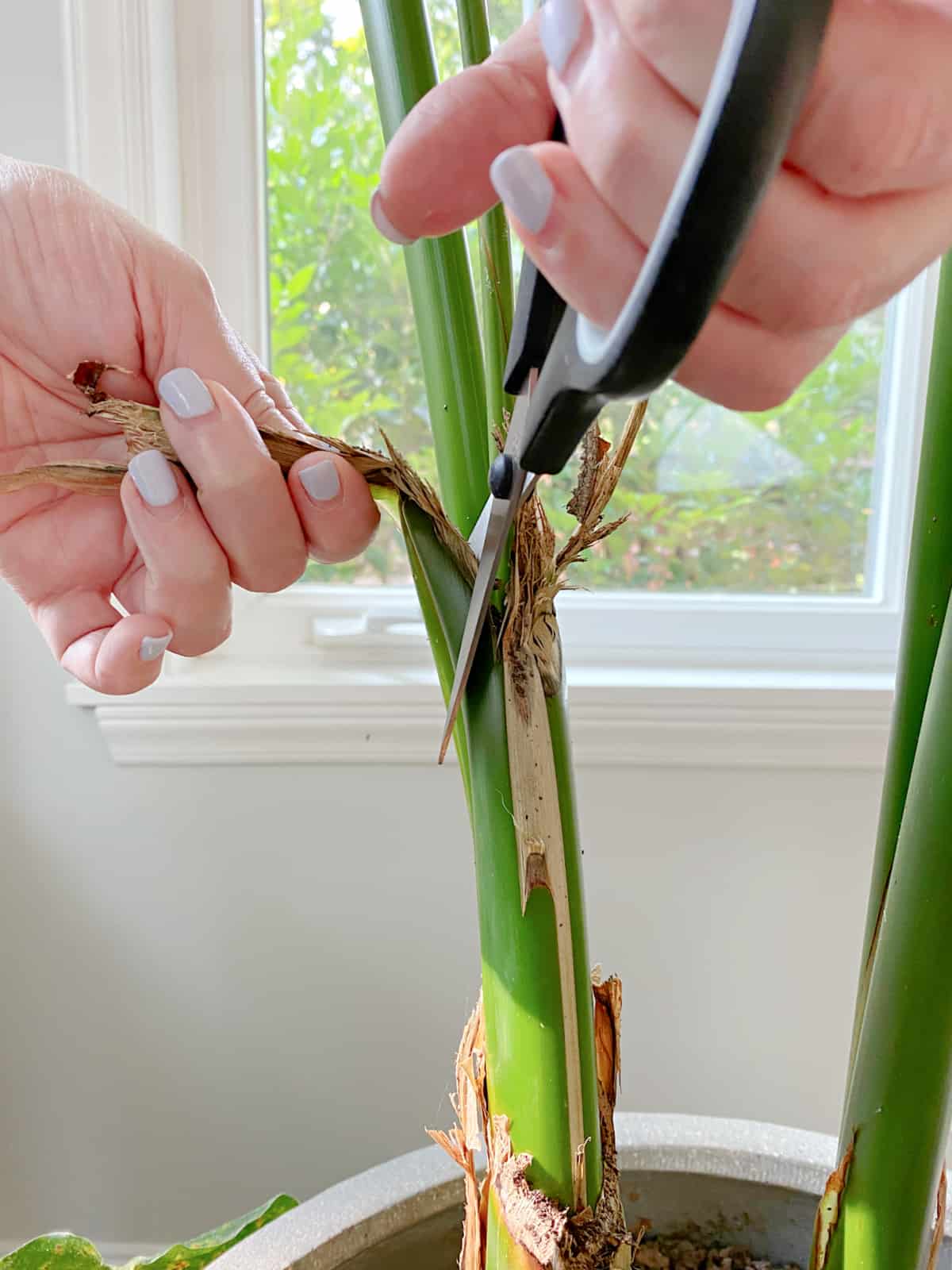
That’s it.
It’s scary the first time but a necessary part of plant maintenance to keep your green friend healthy and happy.
How to Repot a Bird of Paradise Plant
If you’re growing a bird of paradise indoors, like I am, it’ll grow much slower than it would outdoors.
Based on the size of your roots, you might have to repot it every three years to allow for more growth.
A tell-tale sign you need to repot is when you can see the roots growing outside the soil.
To allow the plant to grow taller, repot into a container that’s at least 2 inches larger than the current one.
If not, you can reuse the same pot or one that’s slightly larger, and just switch out the soil.
To repot, lay out some garbage bags or newspaper to keep from making a mess all over.
Remove the plant from the pot, and shake off as much old soil as you can, particularly from the roots.
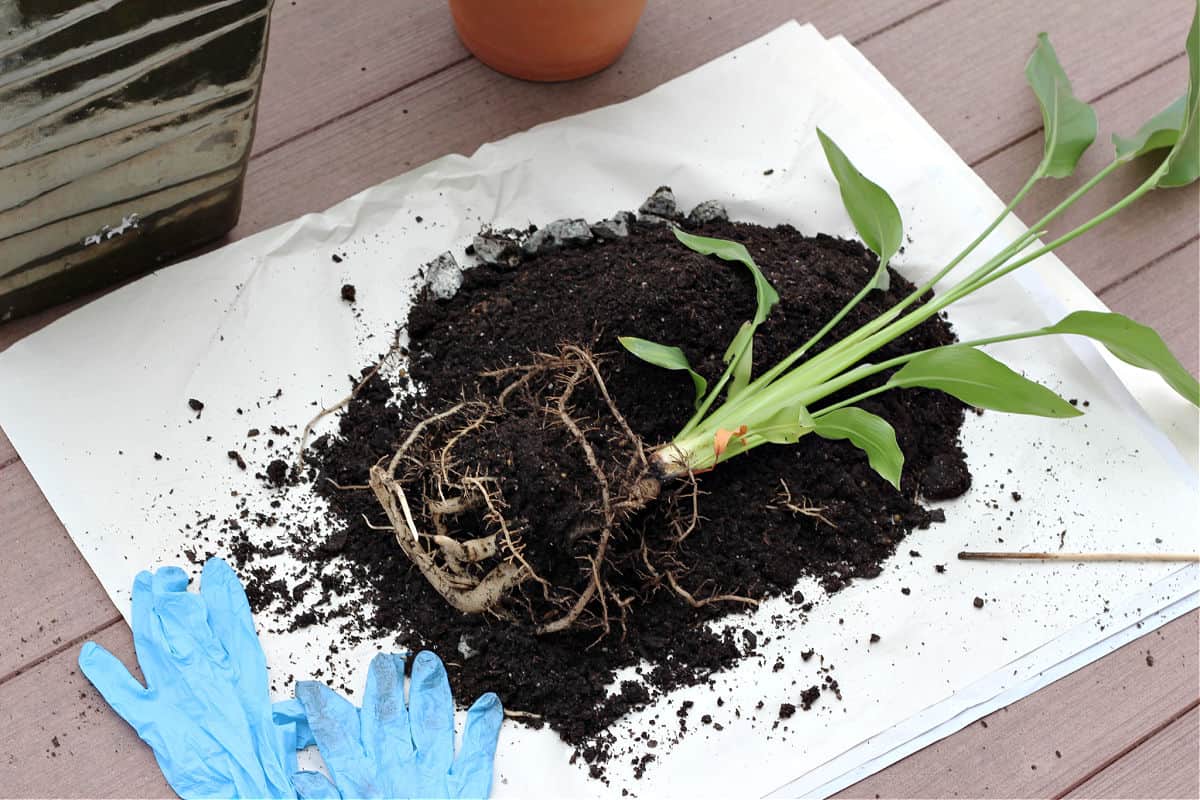
Add the soil of your choice to a new pot, and place the plant in the center. Pat down firmly until all roots are covered by soil.
Water the soil deeply, then place your repotted bird of paradise in indirect sunlight.
At this point, the plant needs time to adjust to its new pot, and should be gradually exposed to direct sunlight.
I was always intimidated to grow my own bird of paradise but they really are easy to care for.
The most important thing for a happy plant is sunlight and she has plenty of that.
Have you ever tried to grow a bird of paradise plant inside?
Want more plant ideas?
- Fiddle Leaf Fig Care – tips for caring and growing a healthy fiddle leaf fig.
- Repotting a Fiddle Leaf Fig – step by step tutorial for repotting a fiddle leaf fig.
- 6 Great Ideas for Decorating with Plants Indoors

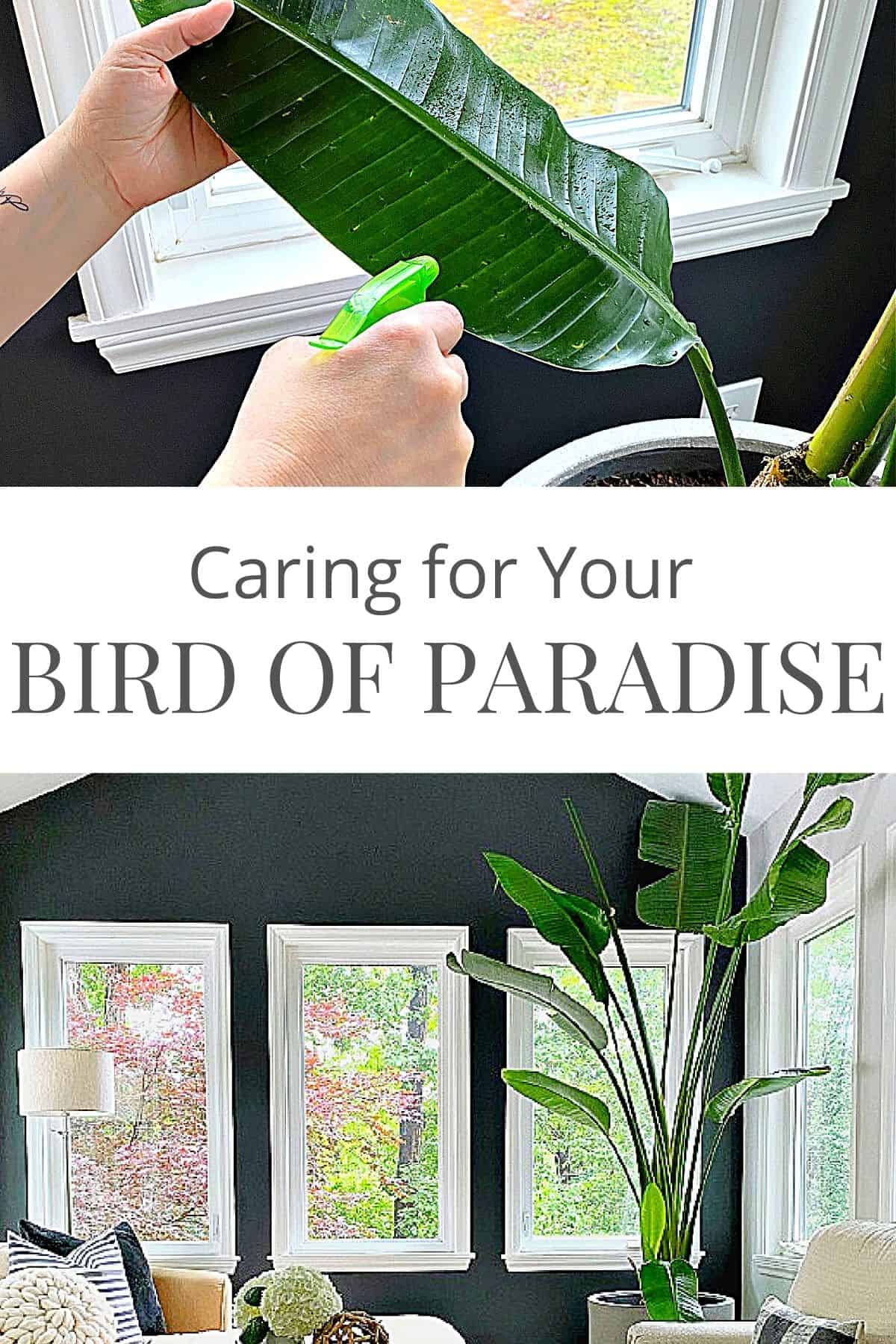
Hi there! Can a bird of paradise be propagated? My daughter has a beautiful one that I was hoping to take a piece of
Thanks!!
Hi Danielle. You can definitely propagate a bird of paradise.
You my friend are truly a plant whisperer. Ethel couldn’t have ended up in a better home! Hoping you guys are well!
Thanks so much sweet friend! Seeing her grow makes me happy!
Hi Kristi, Sue here from the lovely snowy city of Chicago.(and I do mean snowy, along with a deep freeze.) I remember when you got Ethel. She really is happy now living in the perfect place for her. I also have a Ethel here (my moms name) a beautiful 5 ft high Arilia that is 17 years old and grown from at 6″ cutting. I also now have a 5′ Fiddle leaf Fig called Norbert ( my fathers name) Norbert I bought off a clearance rack for $5.He is my first fig and I have had him for 2 years now. I have to admit he’s not as hard to grow as I was led to believe. Glad to see how well your Ethel is doing. Time to go out and shovel more snow now. TTYL
Hi Sue! Boy, I’m not missing the Chicago winters right now! Brrrr…You’ve told me about your Ethel before but I didn’t realize she was 17 years old. That’s fabulous! And I agree with you on keeping fiddle leaf figs. I was always afraid to get one, afraid they were hard to take care of. I don’t find that true at all. Actually I’m doing a post on them as well, and my Leo.
Stay warm! And thanks for stopping in to say hi!
It’s obvious that Ethel is loved! Congratulations on a gorgeous plant!
She is loved! Thanks so much, Sandra!